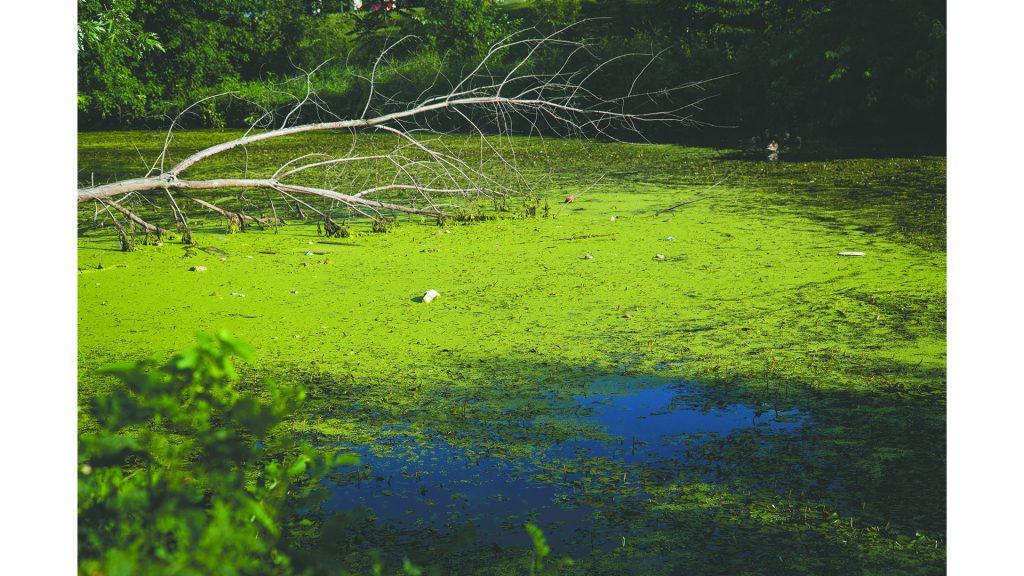As the effects of climate change descend on Iowa, one of the many worsening issues is the health of the state’s rivers and streams.
The Iowa Policy Project based in Iowa City issued a report last month following up on a report from a decade ago that warned of the growing danger of blue-green algae in Iowa’s waterways.
Now, the problem has gotten worse, and the writers of the latest report warn that current policies are failing to address the bacteria poisoning waterways and harming ecosystems all the way to the Gulf of Mexico.
The current policy targets the biggest industry in the state — agriculture. Storm runoff washes fertilizer from farm fields into nearby streams, which all for the most part lead to the Mississippi River.
The 5-year-old Nutrient Reduction Strategy encourages farmers to adapt methods and practices, such as planting cover crops, that reduce the nutrient runoff that leads to algal blooms and the dangerous blue-green algae the authors warned about. The report suggests that the strategy is failing to make a sufficient difference because it is voluntary and lacks a deadline.
“Climate change helps blue-green algae thrive. Those blooms like it hot,” said David Osterberg, a co-author of the report. “You put that together with Iowa’s way of dealing with its agriculture … and not taking water quality very seriously, you have a very big problem.”
Water quality was addressed with a $282 million bill signed by Iowa Gov. Kim Reynolds in February, but it was criticized by several groups, including the Iowa Environmental Council, as being insufficient to solve Iowa’s problem.
RELATED: $282 million water quality bill aims to improve quality of surface water
The authors of the Iowa Policy Project report recommend a solution they argue would be more effective — mandatory vegetative buffer strips. Already required by law in Minnesota, these strips would be planted on the banks of rivers and streams with trees, prairie plants, and other perennial vegetation that filter the nutrients from the runoff, reducing the amount washing into the water. The authors pose that this could be accomplished within 10 years, putting the approach on a timeline, unlike the Nutrient Reduction Strategy.
“Iowa is contributing a lot of nutrients to the dead zone in the Gulf of Mexico. It’s apparent that the Nutrient Reduction Strategy isn’t working, or isn’t fast enough to combat that issue,” co-author of the report Carolyn Buckingham said. “So what the paper suggests is to make these buffers, which is one of the solutions that the Nutrient Reduction Strategy [recommends], but what would be more effective is if those vegetative buffers were mandatory.”
The science behind vegetative buffers gets complicated, however. Jamie Benning, a water-quality manager at Iowa State University Extension and Outreach, said in flat topographies or heavily tiled farms, the vegetative buffer can be ineffective. She recommends a saturated buffer, a relatively low-cost setup that uses pipes to route runoff into the buffer and increase filtration of nitrates by 50 percent.
The Iowa Policy Project’s report is intended simply to recommend. Osterberg said the group does not lobby for legislative change but presents policy ideas based on factual information, which the researchers have found shows agricultural practices are a detriment to water quality.



